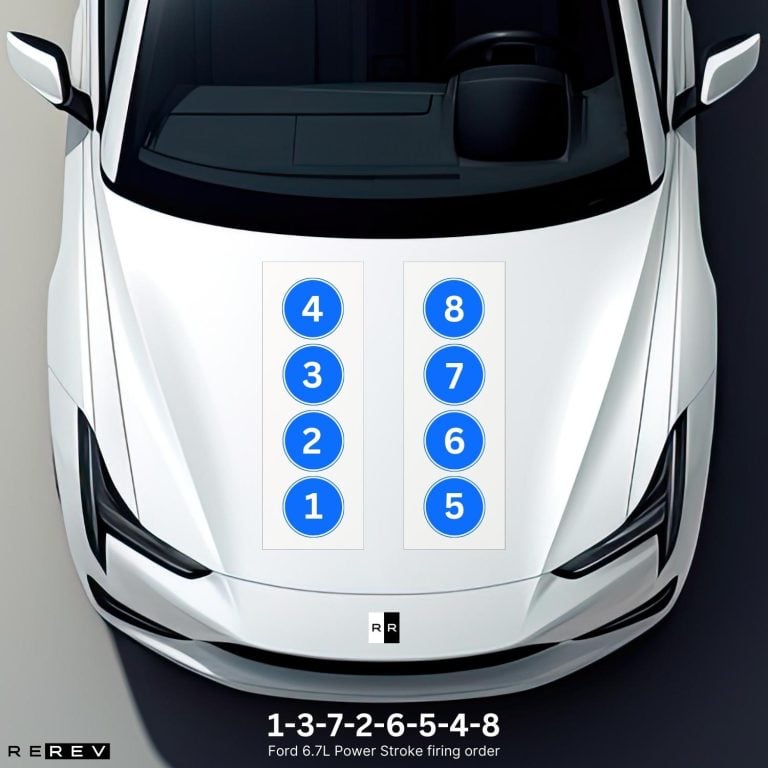Ford 6.7L Power Stroke firing order — diagram & guide
Understanding the dynamics of the Ford 6.7L Power Stroke firing order for enhanced output.

After decades of working with Navistar on the development of new diesel engines, Ford decided to take matters into its own hands back in 2010. The 6.7-liter Power Stroke engine codenamed “Scorpion” was among the first variations that they independently produced, and it powered quite a few of Ford’s heavy-duty vehicles.
After a while of being in production, the engine received some updates, so the common question appeared – what’s the Ford 6.7L Power Stroke firing order? Well, we’ll discuss this as well as the other key features like vehicle applications and cylinder numbering in this guide.
Ford 6.7L firing order
To put it simply – the Ford 6.7L Power Stroke firing order is 1-3-7-2-6-5-4-8 and this sequence remains the same for all the variations.
We’ve seen drivers struggle when it comes to determining the firing order of the regular Power Stroke and the HO 6.7-liter Power Stroke, but it’s basically the same engine. It’s just tuned a bit for higher power output and more towing capacity for heavy-duty vehicles.
Overall, the firing order resembles that of earlier Ford’s petrol V8 engines, and it’s quite a bit different from the 3.0-liter diesel V6.
Ford 6.7L Power Stroke cylinder diagram

After getting to know a bit more about the firing order of this engine, it’s essential that you get familiar with the cylinder numbering. That way if anything goes wrong with distributor connections or the valves, you can track the firing sequence in order and hopefully repair the damage yourself.
For this engine, the eight cylinders are divided into two cylinder banks – bank 1 and bank 2. The first bank is placed on the passenger’s side and includes cylinders 1 to 4. The driver’s side bank 2 includes the cylinders 5 to 8 in that exact order.
Ford 6.7L Power Stroke vehicle applications
Ever since the introduction of this engine, the 6.7-liter Power Stroke proved to be a worthy replacement to Ford’s previous 6.4-liter Power Stroke. It used to power most of the same vehicles, but here’s the overall list:
- Ford F-650 Super Duty
- Ford F-750 Super Duty
The engine stuck around from 2011 all the way to 2020 when it was revised for the final time. Even so, it still lives on in the form of the 7.3-liter engine which is basically the same engine with only a slightly higher displacement stroked to over 7 liters, and higher power and torque.
Our take
In the end, it turns out that the 6.7-liter Power Stroke was one of Ford’s best and most reliable diesel engines that they’ve independently produced.
Even so, drivers often report minor engine tweaks that need to be done, so we hope that our guide on Ford’s 6.7-liter Power Stroke firing order provided sufficient help.